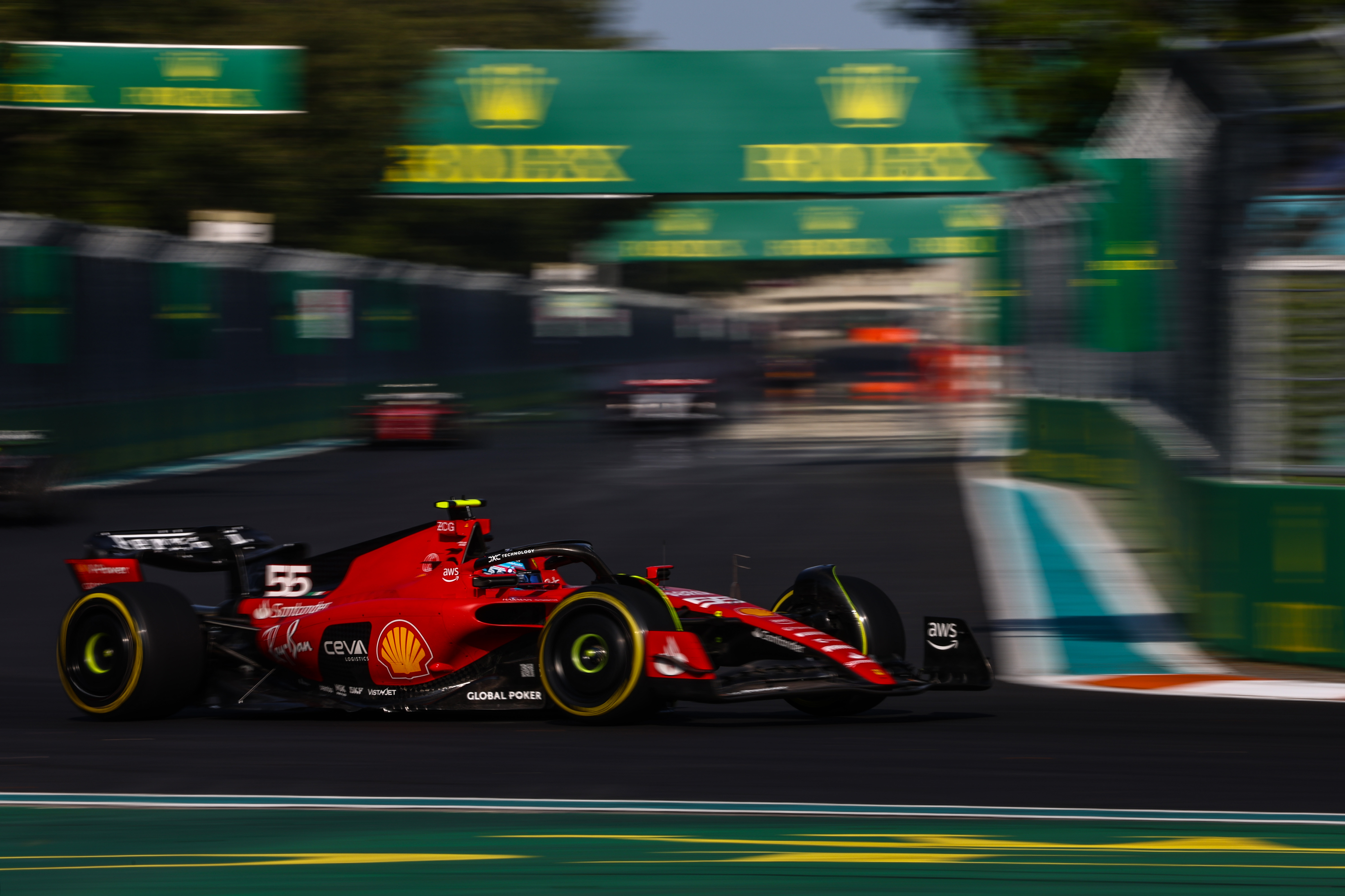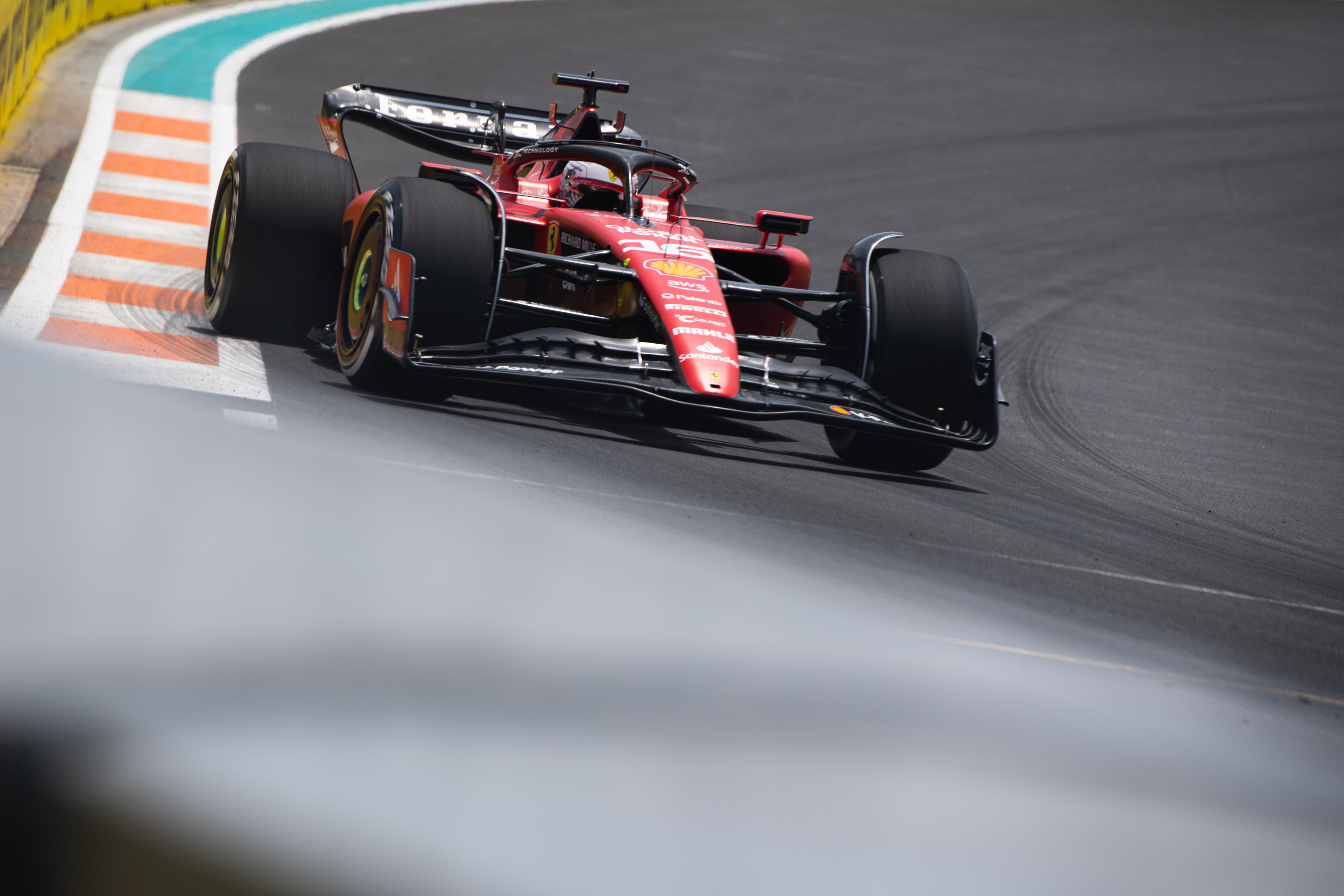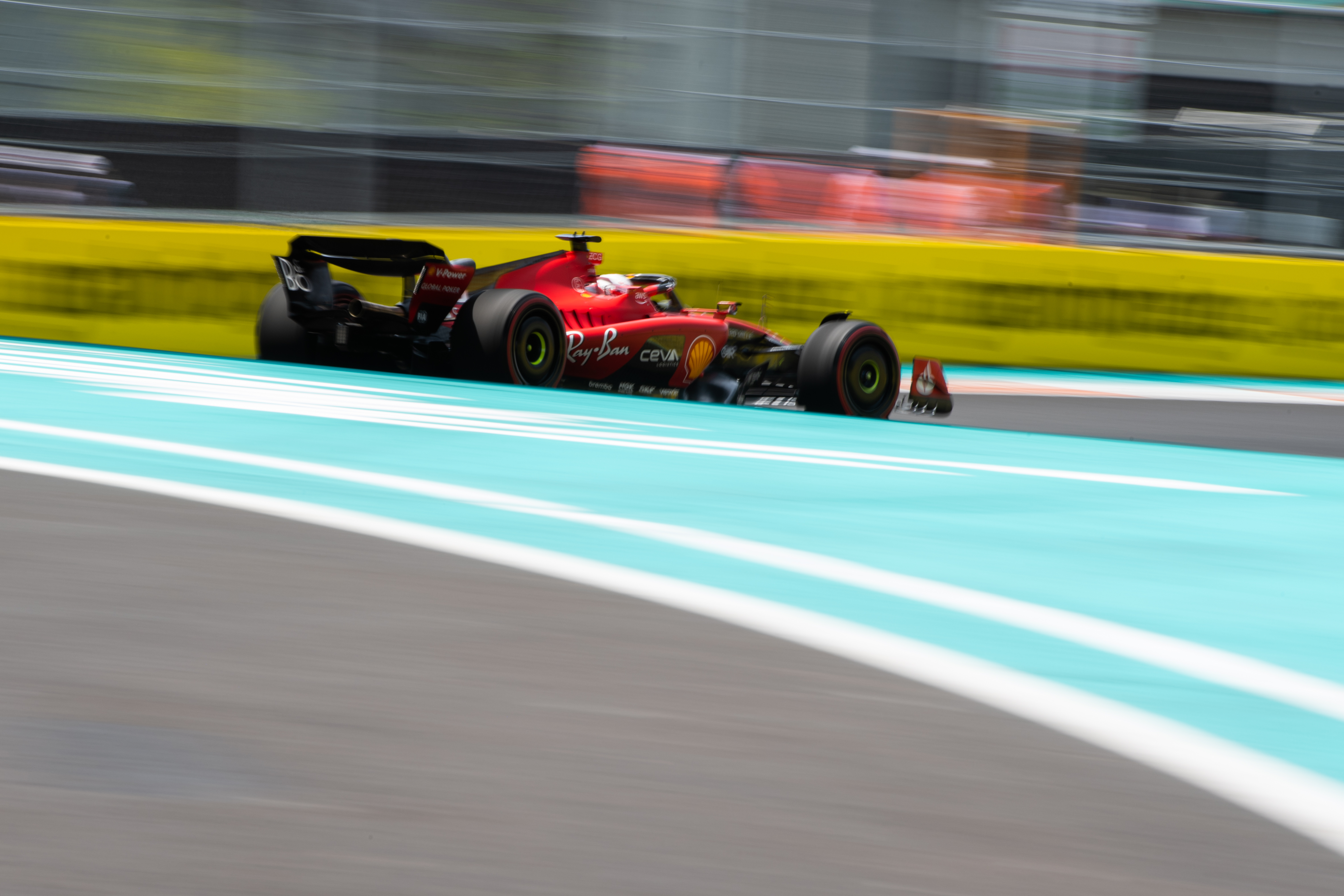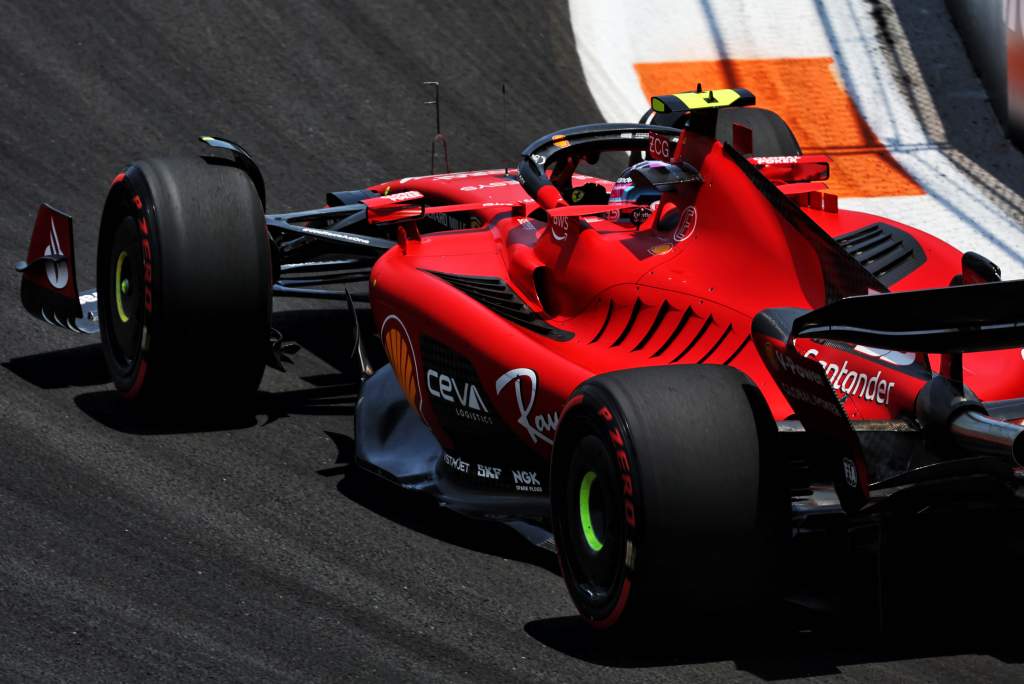Up Next

Ferrari’s upgrade programme will continue at Imola this weekend after the introduction of subtle floor/diffuser changes in Miami that are part of the team’s attempts to “try and make the car a bit more benign”.
Although improving performance is the primary objective, Ferrari has been striving throughout the season to make the car more consistent in order to better exploit its potential across a wide range of conditions. A step was made in Miami, but the problem remains.
Both Ferrari drivers have complained about a peaky and sometimes unpredictable car, with Charles Leclerc unhappy with the car’s inconsistency and the fluctuations between “a huge oversteery balance and then a huge understeery balance”. Carlos Sainz admitted after the race in Miami that “at the moment I cannot push” owing to the variability of the car’s behaviour over long runs in particular.
Ferrari’s Jock Clear, who is a key part of Ferrari’s engineering team as Charles Leclerc’s driver coach, explained in Miami where the difficult-to-spot upgrades were focused.
“The change in the regulations over the winter was predominantly in the side of the floor and the floor height,” said Clear. “The height of the floor relative to the ground is a huge influence on the whole package of downforce. So that’s the area of most people’s development.
“We’ve seen a couple of evolutions of the floor for this car this year pretty much focused in that same area, so the section just ahead of the rear wheel where you’re controlling the flow that goes either outside the wheel or inside the wheel and therefore into the diffuser area.

“The changes are quite subtle, if you’re looking for the change they’re going to be quite difficult to spot. But actually, in aerodynamic terms, they’re quite powerful. So it’s just a response really to the feedback we’ve had from the drivers through the first four races of the year in where the car is deficient.
“Overall, we’re just trying to get more downforce and less drag, that’s what everybody is trying to do. But the subtleties are very powerful these days, because you’re not going to find 2%, 3%, 4% of downforce just like that. But you can move the air around slightly and effectively close the balance window, so give the driver a more consistent balance through medium speed, high speed, low speed, and of course, braking and entry and then exit.
“All those areas where the floor is moving around a lot, we can try and make the car a bit more benign and that makes it more predictable for the driver.”
The Miami changes didn’t transform Ferrari’s fortunes, but correlated as hoped.
Clear argues that Leclerc’s over-confidence in the esses, where he ran too much kerb at Turn 6, bottomed out and crashed in Q3, potentially reflects the fact some improvement had been made in the high-speed stability of the car.
“[For] the area it’s working on, which is predominantly the medium-speed and high-speed stability, this is a track that’s going to expose that,” said Clear. “It has been performing as we expected it to and indeed both drivers are much more comfortable with the car through the medium speed, high-speed stability.
“Maybe what happened with Charles is actually a testament to that, he was really, really going for it in those high speed 4, 5, 6 curves and what you saw was what you saw.”

Improving the set-up of the car as Ferrari has built familiarity has also played a part in Ferrari making gains in this area.
But as Clear explains, finding a way to reduce the peakiness now the team has got better at ensuring the car is in a better window is now a priority.
“With a new aero package over the winter, we’ve taken a while to find the setup,” says Clear. “And we know that we made some progress in Australia and certainly we made some big progress in Azerbaijan.
“This floor contributes again to getting the car in a better window and, as the drivers were reporting, that it is peaky, so we need to get rid of some of that peakiness.
“That’s probably the main focus at the moment, to make the car a bit more benign so the drivers have to have a bit more confidence.”
GARY ANDERSON SAYS

Peaky downforce is never a good thing. High downforce numbers are great if you are trying to impress someone who doesn’t understand the fact the driver can’t really make use of those peaks and it’s instead the troughs that define how hard they can confidently push.
As I’ve said before, Leclerc pushes into those peaks and that’s probably where most of his mistakes come from. Carlos Sainz drives within the car, in other words to the troughs, meaning he will be slightly slower but less likely to make an error by being right on the edge.
Ferrari brought a new floor to Miami, which was supposed to reduce this peaky nature of the underfloor. But as we saw with Leclerc crashing twice, I’m not so sure it did much to the problem. Yes, he was guilty of overdoing it with kerb usage but that’s what you sometimes need to do when you are wringing the car’s neck in qualifying.
In my earlier article on the Mercedes problems and the fact that it could easily be the stability of the centre of pressure of the underfloor it wouldn’t surprise me if the Ferrari problem was in the same area. With the increase of 15mm in the height of the sides of the floor and the raising of the throat of the floor for 2023, it could very easily have increased this centre-of-pressure shift.
With the original floor heights in 2022, the underfloor would have been more powerful because it was working closer to the ground for more of the time, so producing more ground effect downforce, hence the bouncing we saw on many occasions being a bigger problem than we see today.
However by increasing the floor’s throat height and the leakage along the sides of the floor, it could very easily be going in and out of the most efficient ground clearance to get the best from the underfloor.
To explain that phenomenon a little bit more simply, last year the underfloor was suffering from a certain percentage of airflow stall all of the time, it just got worse as the car got nearer to the ground. This year, it doesn’t suffer at the higher ride heights but instead suffers more at the lower ride heights, so generates an aerodynamic balance shift when that happens.

The new floor in Miami had a more progressive leading edge. Personally, I have never been a fan of aggressive changes in shape, especially on the leading edge of something as powerful as the underfloor.
The vertical splitters inside that area separate the flow volume being scavenged out of the front corners of the floor and how much flow gets pulled along the centre of the car by the diffuser, so it would be very easy to increase the spillage off the lower edge of these splitters and interfere with the vortices that spill off the lower edge of those splitters.
These vortices re-energise the flow going to the diffuser, especially in the throat area of the underfloor, so consistency in that area is key to the consistency of performance.
This is why it’s very easy to talk about making the car more benign and less peaky, but more difficult to achieve if you don’t have a complete understanding of how the underfloor of your car works aerodynamically.







